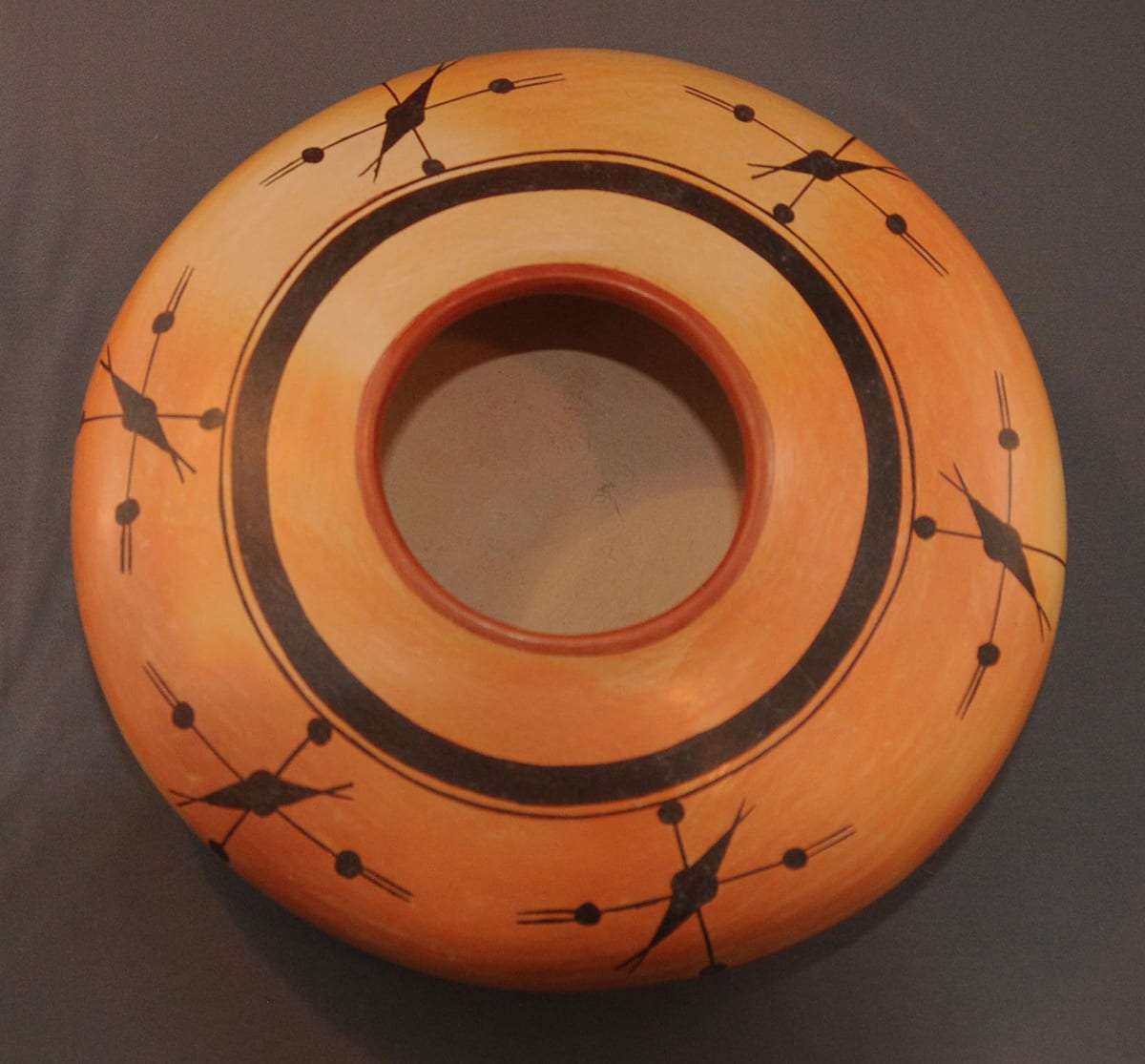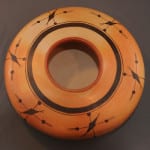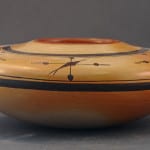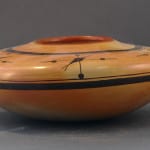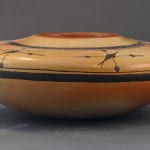This is an elegant pot—similar in form and design to a jar that won Rachel a first-place ribbon at Indian Market last summer.
The shape and thickness of this vessel are very even, which is the mark of a seasoned and skilled maker. A slight firing crack extends from the lip about 1.5” into the body of the pot. As with some historic pottery, the bottom is convex. It is said that such a form was nestled into a sandy spot in the floor of a Hopi home to help keep the contents level. Rachel has recently begun making pots with convex bottoms and she makes a raffia ring with each pot to steady it on a flat surface. Jar 2013-05 is beautifully fired with a rich variegated blushing.
Assessing Hopi aesthetics, potter Karen Charlie and scholar Lea McChesney write:
“….these variations are considered imperfections by many dealers and collectors. Potters find the intermittent, even serendipitous color range appealing. This distinctive feature reveals the vessel’s animate quality and determines whether the pot is ‘real’ or ‘true’ in the potter’s conception. Blush is often the quality that draws potters into this art” (2007:87).
Below a thin red-painted lip are the thick-over-thin framing lines that often characterize Nampeyo family pottery. A monochromatic design floats around the shoulder of the pot. It is formed of crossed lines ending in solid disks; the vertical elements are left plain and the horizontal elements are graced with parallel lines, as with prayer offerings. At an angle to this cross is an element formed of triangles with bases touching and two antenna-like lines emerging from each apex. This delicate design is repeated six times with substantial space between each rendition. A second framing line girds the widest point of the pot, just below the design.
Rachel tells me that she was inspired by birds to develop this pattern, though it also reminds her of the planets and space she sees outside her home on a dark night. The pattern reminds me of a compass face and the six directions recognized by the Hopi (North, South, East, and West, plus up and down). These various interpretations are a good reminder that collectors want to put meaning to every design while the artist simply does what pleases her, including developing explanations that satisfy the buyer.
Each characteristic of this pot is subtle: the graceful shape, rich blushing, thin red lip, and delicate monochromatic design. These elements play off each other and the together they define a pot that is serene, graceful, and centered: a pleasure for the eye. Such a rich result is characteristic of the finest monochromatic Hopi-Tewa pots. For another example, see pot 1992-02 by Mark Tahbo.

